26-year-old Viktor Axelsen is not the most talented player to come out of Denmark. He is definitely not one of the most consistent players on the tour, and not a serial winner for sure. But when opportunity has presented itself, he has been smart enough to take advantage and this is precisely what makes him the most successful of Danish players across generations.
By Bikash Mohapatra. Photos: Badmintonphoto
Is Viktor Axelsen one of the most dominating players in the history of badminton?
Is he among the most successful players?
Is he Denmark’s best player ever?
The above questions may either be answered in the negative or with a certain amount of hesitation, or rather a lack of conviction. However, if we ask who is Denmark most successful player in terms of the sheer variety in terms of achievements there wouldn’t be an iota of doubt as regards the answer.
Axelsen is the unanimous winner in this case, neither because he is the most dominant player to come out of Denmark nor because he is the most consistent. What makes the 26-year-old the clear-cut, most successful is the fact that he has the most complete trophy cabinet among all Danish players across generations.
In a sport dominated by Asian countries like China, Korea, Indonesia and Japan, Denmark is a classic case of David taking on the Goliath (in this case Goliaths). A country of roughly six million people, Denmark has, over the last nine decades or so, somehow managed to punch above its weight and has consistently challenged the Asian powerhouses.
While on the one hand the country has produced legendary players like Erland Kops, Svend Pri, Fleming Delfs, Morten Frost (pictured left, with Kenneth Jonassen), and Poul-Erik Hoyer, to name a few, the results haven’t been commensurate to the talent at disposal. There have been few success stories over the years but overall it has been more heartbreaks for the Danes than moments of celebration.
They have been a competent badminton nation alright, but when it comes down to consistency of results, Denmark has mostly been at the receiving end. The country’s players have more often than not flattered to deceive at the game’s biggest stage, in flagship tournaments like the Olympics, the World Championships and the World Tour Finals or for that matter the Thomas Cup.
Beating a slew of Asian players to win a tournament is a tough ask. The alternative is to take advantage of the few occasions when the Asians fumble. It is here that Denmark has failed to make it count. The problem with many Danish players has been the fact that most of them have failed to convert their chances, after having worked so hard to create them in the first place. It is this failure that has deprived them of those career-defining moments.
Frost, for instance, won all the major tournaments during his time save the most coveted of them all. The right-hander had two chances to win the World Championships. He fluffed them both. Han Jian bested him in the 1985 final, held in Calgary (Canada), and two years later in Beijing, Frost came up short against another Chinese opponent, Yang Yang. In fact, following his defeat in Beijing, the headlines read “the world’s greatest badminton player may never be a world champion”. It stayed that way.
Likewise, Peter Gade (pictured right, with Axelsen) won a host of Grand Prix titles, was ranked No.1 for considerable time and was among the world’s best players for more than a decade. However, the length of his career notwithstanding Gade could never win either of the game’s biggest prizes, the Olympics or the World Championships. Despite representing Denmark in as many as four Olympic Games, a medal remained elusive.
Gade won five medals at the World Championships, although none of them was gold. His best shot at the title came in the 2001 edition in Seville, but he could not get past Indonesia’s Hendrawan in the final.
Anders Antonsen, one of the most exciting players in the world in recent times, has failed to convert any of the many opportunities he has created – including the World Championships final in Basel last year, and he is still waiting for that major breakthrough.
It is not as if all the stalwarts from Denmark weren’t successful in making the opportunities count. Flemming Delfs won all the major tournaments during his time, including the inaugural World Championships in 1977. Peter Rasmussen didn’t win many titles during his injury prone career. However, he won one that mattered the most – the World Championships in 1997.
Poul-Erik Hoyer (pictured right, with fellow Olympic gold medallist Chen Long) eased past a clutch of Indonesian and Malaysian players before beating China’s Dong Jiong to gold at Atlanta in 1996. The incumbent President of the Badminton World Federation (BWF) remains the lone men’s singles champion from Europe at the Olympics.
All of the names above, save for Antonsen (who will have more chances), also failed to help Denmark win the coveted Thomas Cup – the Nordic nation having ended up as the beaten finalist on as many as eight occasions.
It is in this context that Axelsen’s achievements assume greater significance. When Denmark finally won the biggest men’s team competition, in its ninth final appearance in 2016, it was Axelsen who played a starring role, winning five of his six matches, including the one in the final against Indonesia, when he beat Tommy Sugiarto.
The 2010 World Junior Champion – coincidentally the first European to win a junior world singles title – has since slowly but steadily built on that success. On the one hand, the young Axelsen took advantage of the decline of the Chinese dominance in the men’s circuit – improving his overall record against former Olympic and World champions Lin Dan and Chen Long in the process. On the other, he has managed to have an upper hand over most of his contemporaries.
While it will be an exaggeration to say Axelsen has a stranglehold over most of the current lot, suffice to say on a given day he is capable of beating any of them, save for one. Kento Momota (pictured left) has been the Dane’s nemesis for more than half a decade now, a thorn in his flesh so to speak. No matter how good the form he is in, or what he does, Axelsen has so far failed to counter the Japanese player’s guile and fortitude.
In the last six years Momota has dominated Axelsen, winning their last 13 matches, five of them being tournament finals – including the Malaysia Masters this year. He may have a mental block while facing the reigning World Champion but at the same time Axelsen deserves credit for taking his chances when the Japanese is out of the picture.
When Momota was suspended for gambling in April 2016 he was not the dominant player he is now. Yet he had bested the Dane in the deciders at both the 2015 Superseries Finals in Dubai as well as the 2016 India Open, the week before his suspension. In Momota’s absence, Axelsen beat Lin Dan to the bronze at Rio – his first Olympic medal. Then came the gold medal at the Superseries Finals, making him the first singles player from Denmark to win the year-end tournament in its current form.
While Momota returned from suspension in 2017, he consciously participated in the lower rung tournaments, instead of getting straight back into the grind. And Axelsen went on to win the biggest title of his career so far, the BWF World Championships in Glasgow, beating former champions Chen Long and Lin Dan in successive matches in the process.
The now retired Malaysian legend Lee Chong Wei (pictured right) was also accounted for twice, at the Japan Open Superseries and then as Axelsen was en route to a successful title defense at the Superseries Finals. The first of those wins propelled Axelsen to the top of the BWF world rankings. Add the predictable success reserved for the Danes at the European Championships (individual and team) and it seemed a perfect script.
However, there was a twist in the tale, quite a few of them in fact. Recurring injuries and allergies that caused breathing problems meant the Dane had underwhelming seasons in both 2018 and 2019. And when he did manage to string together a few wins, a rejuvenated Momota was there to stifle his chances – the 2018 Indonesia Open Super 1000 and the 2019 All England Championships being cases in point.
Momota expectedly beat Axelsen to the title in Malaysia in January. However, the Japanese met with an accident en route to the airport following his triumph, and that has kept him out since. No points for guessing which player has made the most of this high profile absence.
A title defense at the Spain Masters was on expected lines, but what followed was a memorable triumph. Axelsen’s best efforts weren’t good enough to get the better of Momota at the All England Open final last year. This year the Dane hardly broke a sweat.
With the Super 1000 tournament being the last to be played before a six-week suspension imposed by the BWF following the scourge of the Covid-19 coronavirus, Axelsen gave himself a reason to celebrate, a straight-game win over Taiwan’s Chou Tien Chen, the tournament’s top seed. This gave Axelsen a maiden All England title and made him the first Dane in 21 years – after Peter Gade in 1999 – to win the men’s singles discipline in Arena Birmingham.
The 26-year-old had successfully seized the opportunity yet again. The 2020 All England triumph is in more ways than one the final piece in Axelsen’s career jigsaw. Together with his 2017 world title, the back-to-back successes at the year-end finals, the Thomas Cup win in 2016, the bronze at Rio and the multiple success in European-level tournaments, the triumph in Birmingham means Axelsen can boast of a medal chest no other Dane or European can match. This enviable feat has been made possible because the player in question managed to seize the opportunities at his disposal. Unlike others, he didn’t let them slip.
His predecessors may have been more emphatic and consistent winners, and may well have won one particular tournament on more occasions but none can boast of the variety that Axelsen has managed over the years. Not to forget at 26, he has his best years ahead of him.
Commentators, critics and experts will opine sans an Olympic gold medal his collection is still incomplete. Some will argue Momota is the favourite for gold at Tokyo – should the Olympics go ahead as scheduled. Others will say if he doesn’t win the gold in Tokyo, he won’t get another chance – considering he will be 30 by the next Olympics in 2024.
That said, the fact remains Axelsen has an Olympic medal, the color notwithstanding. Considering his current form another Olympic medal can’t be ruled out. Whether he goes on to win the gold or not remains to be seen. The player cannot be judged solely on the basis of his performance at the quadrennial extravaganza. His overall success has to be taken into account.
And by that yardstick, Axelsen is already Denmark’s best player ever. The varied nature of his achievements is ample testimony to this assertion.
![Viktor Axelsen: The Opportunist 26-year-old Viktor Axelsen is not the most talented player to come out of Denmark. He is definitely not one of the most consistent players on the tour, and not a […]](http://www.badzine.net/wp-content/uploads/ngg_featured/20200315_1407_AllEngland2020_BPES7764_rotator.jpg)
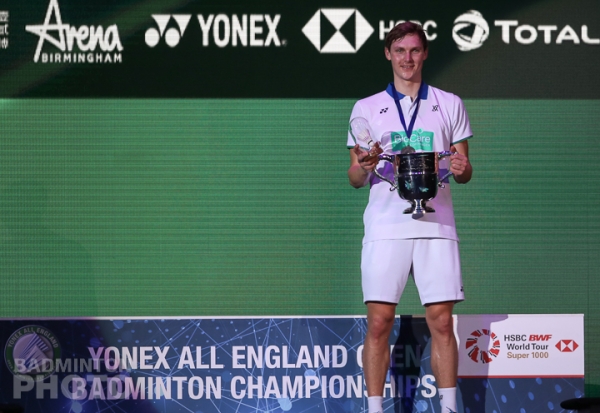
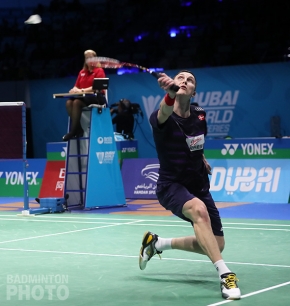

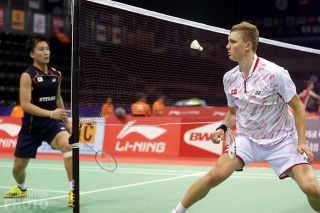
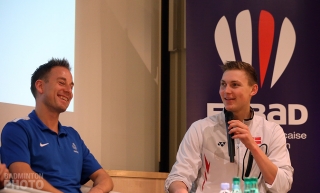
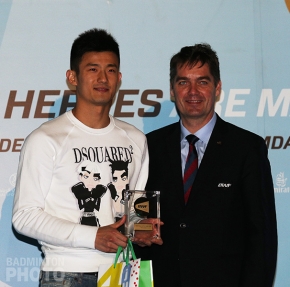

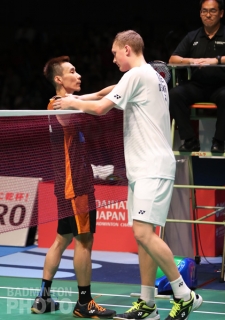
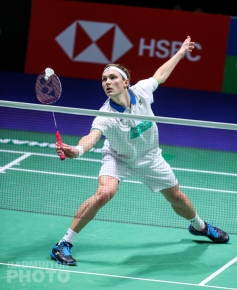
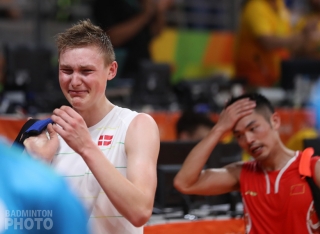
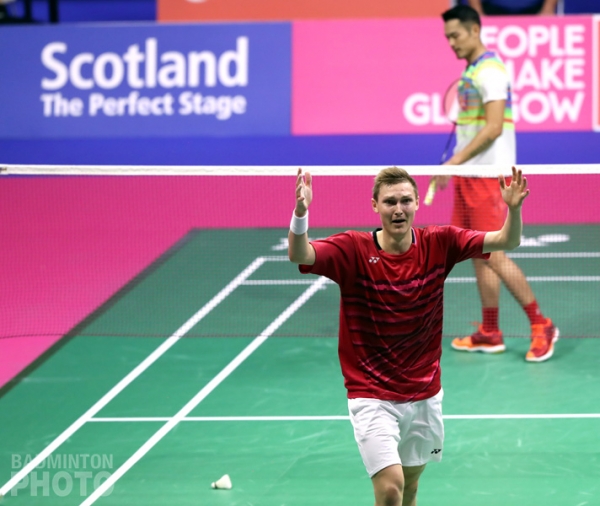


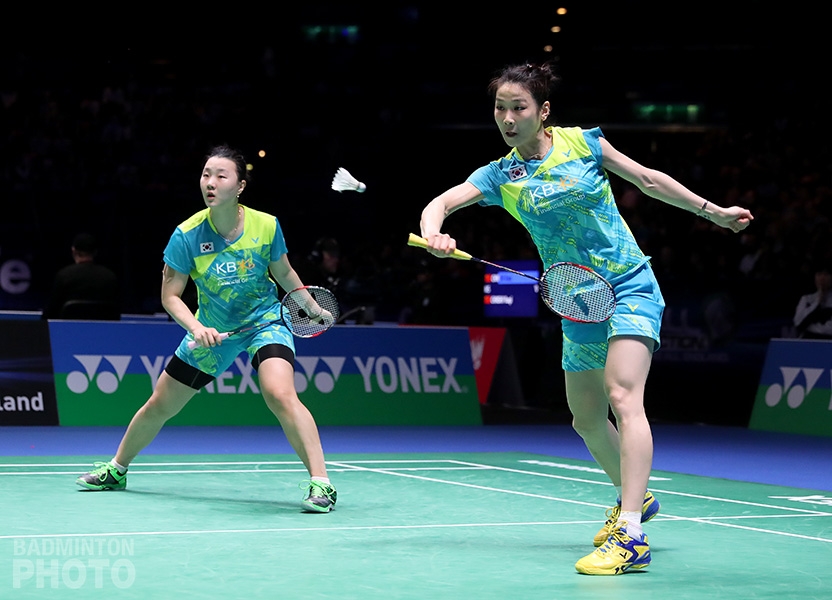

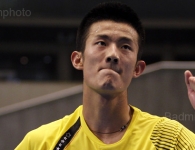

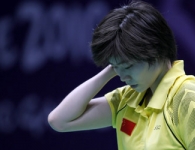
You cannot see Viktor Axelsen rages anymore because he’s a grown man now . I remember he throws his racquet away when he lost to Lee Chong Wei in one of the match . Viktor Axelsen maybe can only take 1 gold only on Olympics .
Indeed he is best in business but kento will always remain the more result oriented player in these scenario when specially the Result really does matter, he is the one who can single-handedly destroy any of the top players. his composure, game reading skill and confidence are the key consideration which needs to met if anyone want to level him.
whereasif talk specially about double players from india then Satwiksairaj Rankireddy and Chirag shetty are 2 Key potential players who can really change the Indian Badminton history in doubles on Olympic platform provided they are groomed mentally strong with perfect mutual coordination. we wish them to see on podium soon with Indian flag.